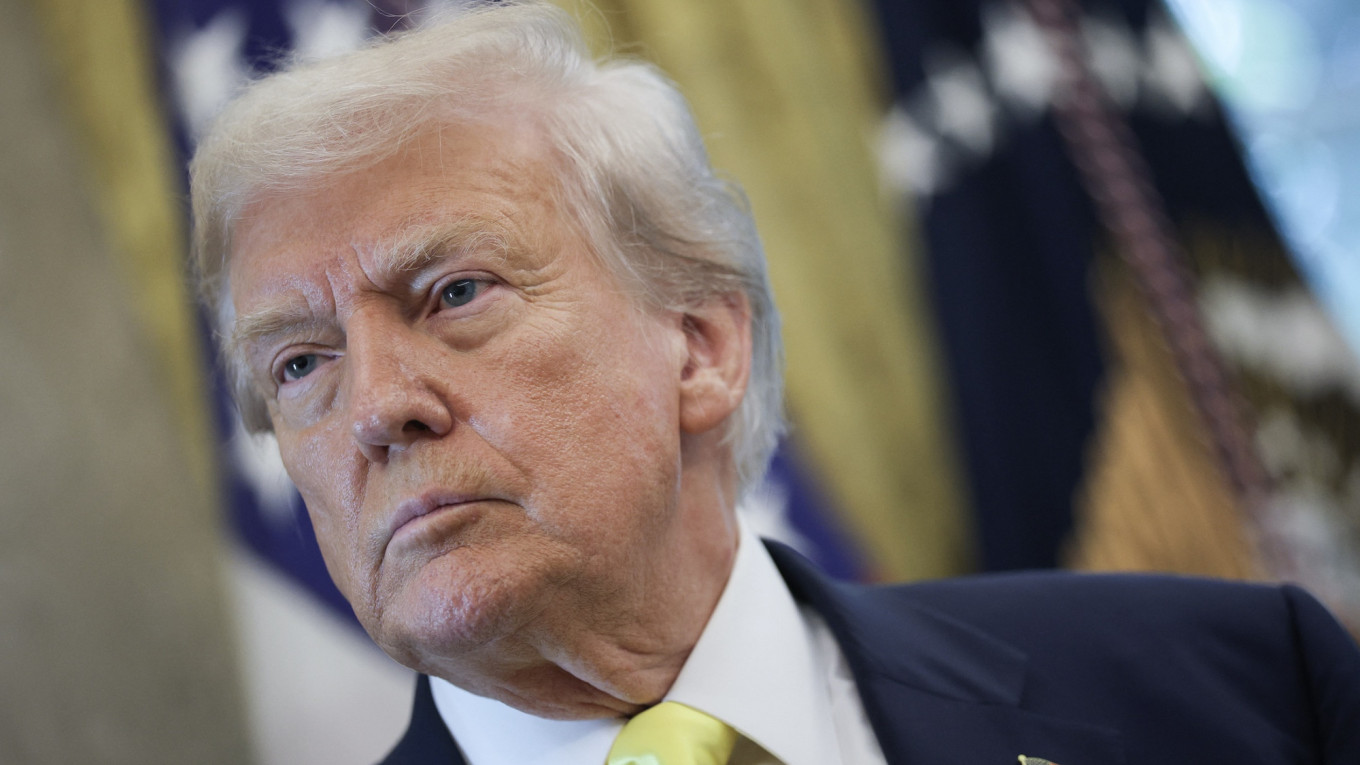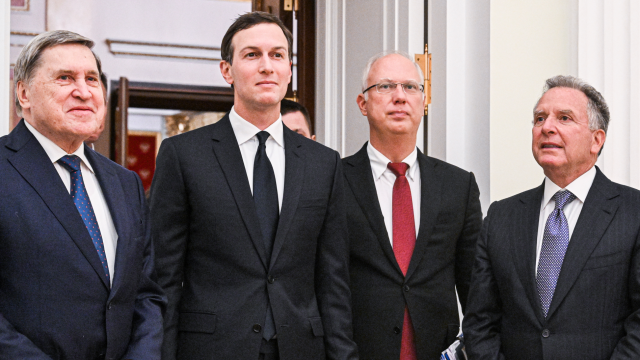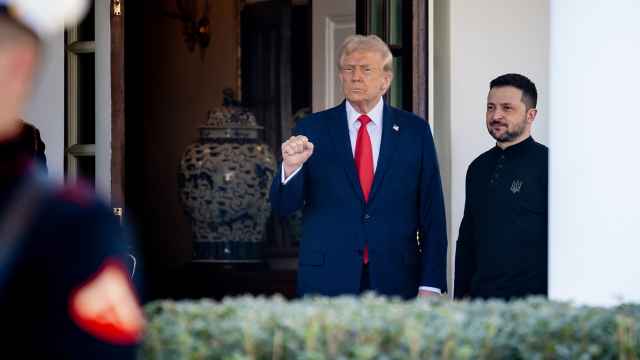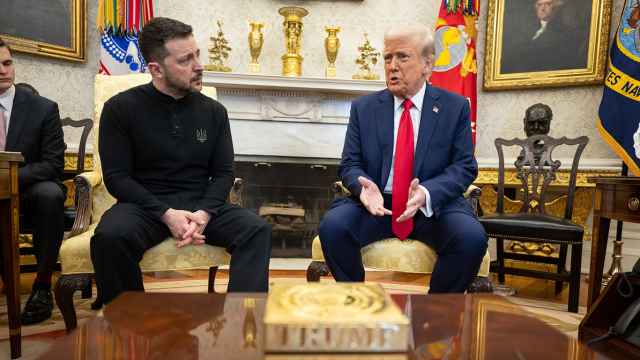The images of Steve Witkoff, President Donald Trump’s envoy, shaking hands with President Vladimir Putin on Aug. 6 in Moscow were familiar. High-ceilinged rooms, gilded everything, warm handshakes, smiles.
Afterward, there were familiar noises: a Kremlin spokesman said the talks had been “constructive.” Russian state media announced that Putin had “conveyed some signals to the United States on the Ukrainian issue,” with Trump sending a similar message.
As Witkoff left Moscow, Trump announced an additional 25% tariff on India in response to its continued purchase of Russian oil. The language in the White House fact sheet announcing the decision was important: “The Russian Federation’s actions in Ukraine,” it said, “pose an ongoing threat to U.S. national security.”
President Trump’s announcement of additional tariffs on India, linked to Russia’s actions in Ukraine, appeared to be a U-turn in U.S. policy, marking the first time since January that Washington announced measures to punish Moscow.
Many observers have said for years that Russia’s invasion of Ukraine threatened U.S. as well as European security. The title of the fact sheet, which explicitly said the Kremlin posed a threat to the United States, made it look like Washington was finally taking the situation seriously.
The problem was that Trump’s foreign policy team had consistently taken Russia’s side in the conflict for months. In February, U.S. Defense Secretary Pete Hegseth said Ukraine would never regain its pre-2014 borders or join NATO — bowing to key Russian demands before negotiations even started.
The same month saw Trump calling President Volodymyr Zelensky of Ukraine a “dictator” and the slow-motion car crash shouting match with Zelensky in the Oval Office. Meanwhile, the U.S. refused to condemn Russia at the United Nations for invading Ukraine, voting alongside Russia and North Korea.
As Russia ramped up its bombing campaign and refused to implement a ceasefire, Trump began to express frustration with Putin, eventually threatening to walk away from efforts to bring about a peace deal. First, he argued that this was a European problem, then he rubbished European efforts to put in place a military force to guarantee Ukrainian security after any deal.
July brought more signs of a change of heart from the U.S. president. Trump said he would impose 100% secondary sanctions on Russia’s trade partners if a peace deal was not reached by Sept. 1. He also said he would “massively supply” Ukraine with arms.
Then, unpredictable as ever, he brought the tariff deadline forward to Aug. 8. The fact that the deadline has now passed without action recalls Douglas Adams’ famous quote: “I love deadlines. I love the whooshing noise they make as they go by.”
For 24 hours after Witkoff’s visit two days before the deadline, it was possible to hope that Trump’s announcement of an additional 25% tariff on India, plus the White House statement that Russia’s actions in Ukraine posed a threat to U.S. security, could be a first, unprecedented step toward Washington putting pressure on Russia to stop the war.
But that optimism quickly appeared premature: Trump has announced a bilateral summit with Putin in Alaska while leaving open the possibility of Zelensky joining in.
Sadly, every indication points to Trump — not for the first time — preparing to sell out Ukraine.
Trump’s use of unpredictability as a negotiating tactic makes forecasting his actions hazardous. But at present, all signs point towards a sell-out. Trump has referred to “great progress” in Witkoff’s talks with Putin and has said, “there will be some swapping of territories” to end the war.
The new tariffs on India — not 100% as forecast, but a total of 50% — do not come into effect until Aug. 27, well after the Putin-Trump summit on Aug. 15. No other countries that punish Russian oil have been targeted.
It appears that, in his eager pursuit of a deal — any deal — Trump is reviving U.S. “peace” proposals that give Russia everything it wants. That could include the U.S. formally recognizing Russian sovereignty over Crimea, which Russia occupied in 2014. Such an acknowledgement of a territory seized by force would embolden Russia to launch future attacks in Ukraine and perhaps other neighbors. It would incentivize all other countries with ambitions on the territories of their neighbors to launch fresh wars.
It would also drive a coach and horses through nuclear nonproliferation efforts. The clear message would be: unless you get nuclear weapons, your nuclear-armed neighbour can do whatever the hell they want. Every country — including in Europe — would need to massively boost its defense budget to be able to deter future aggression.
As Margus Tsahkna, Estonia’s foreign minister, said, “If borders can be changed by force, none of us are safe … Sovereignty and territorial integrity are the cornerstones of global stability.”
The announcement of a Putin-Trump summit makes it likely the U.S. will try to negotiate a deal over Ukraine’s head. The U.S. has done nothing to impose new tariffs on Russia. But there are plenty of things Washington could do: action against Russia’s shadow fleet; secondary sanctions on banks and oil refineries in other countries that facilitate trade in Russian oil; and providing more weapons to help Ukraine turn the tide of the war. None of this has happened.
Rather, the risk is that Trump will “agree” with Putin a deal that requires Ukraine to give up land. If Ukraine declines to do so, the U.S. may put pressure on Ukraine to agree. The U.S. has done this several times since January already — cutting off arms supplies to, and intelligence cooperation with, Ukraine — without ever putting pressure on Russia.
No wonder Ukraine has been saying that it will not accept any agreement made without it — especially one that legitimizes Russia’s occupation of its sovereign territory. No wonder Zelensky has been calling European leaders, seeking to firm up support for that line. They should support him — in the interests of both European and U.S. security.
Putin has an impressive history of getting everything he wants from Trump every time they talk. The announcement of an in-person bilateral summit on U.S. territory, sadly, makes it look likely that the Russian president has again wound his U.S. counterpart around his little finger — and will achieve his war goals without making any meaningful concessions.
I hope I will be proved wrong. Because if that happens, the costs to the rest of the world will be high. It will also — as the White House fact sheet implied — compromise the security of the United States itself.
This article was adapted from the original published on rleighturner.com.
A Message from The Moscow Times:
Dear readers,
We are facing unprecedented challenges. Russia's Prosecutor General's Office has designated The Moscow Times as an "undesirable" organization, criminalizing our work and putting our staff at risk of prosecution. This follows our earlier unjust labeling as a "foreign agent."
These actions are direct attempts to silence independent journalism in Russia. The authorities claim our work "discredits the decisions of the Russian leadership." We see things differently: we strive to provide accurate, unbiased reporting on Russia.
We, the journalists of The Moscow Times, refuse to be silenced. But to continue our work, we need your help.
Your support, no matter how small, makes a world of difference. If you can, please support us monthly starting from just $2. It's quick to set up, and every contribution makes a significant impact.
By supporting The Moscow Times, you're defending open, independent journalism in the face of repression. Thank you for standing with us.
Remind me later.








